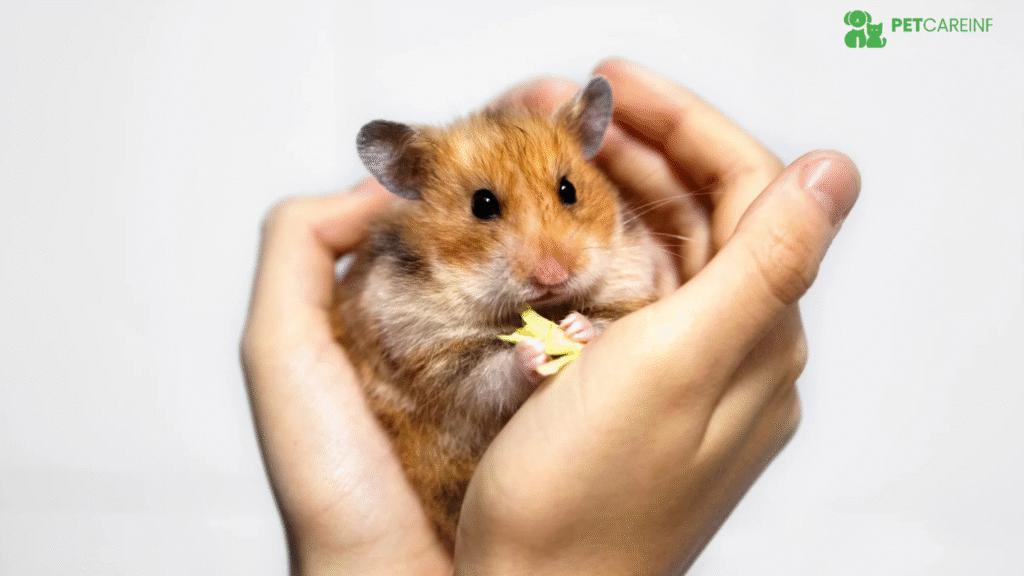It’s scary to notice your dog lose hair. One day their coat looks fine, the next you see bald spots or clumps of fur on the floor. Some shedding is normal, but when the skin shows through or the hair falls out in patches, something more is going on.
There are many reasons for dogs hair falling out. Some are simple, like seasonal shedding. Others are linked to health problems such as allergies, infections, or parasites. Knowing the difference helps you figure out whether your dog just needs a brush or a trip to the vet.
In this guide, we’ll go over the common causes of fur loss in dogs, when it’s harmless, when it’s a warning sign, and what you can do to keep your dog’s coat healthy.
Is Hair Loss in Dogs Normal?
Seeing fur on the floor or the couch is nothing new for most owners. Dogs shed; it’s just part of having them. Some breeds, like Poodles, shed very little. Others, like Huskies and German Shepherds, drop piles of hair, especially in spring and fall when they blow their coats.
Normal shedding is even across the body. What isn’t normal is when you see bald spots, red skin, or sores. If the dog lose hair & comes out in clumps, or if skin shows through in patches, that’s a warning sign.
Shedding can also increase for simple reasons like hot weather or stress, but that should settle down. If the loss keeps going, or if your dog seems itchy and uncomfortable, it’s time for a vet check.
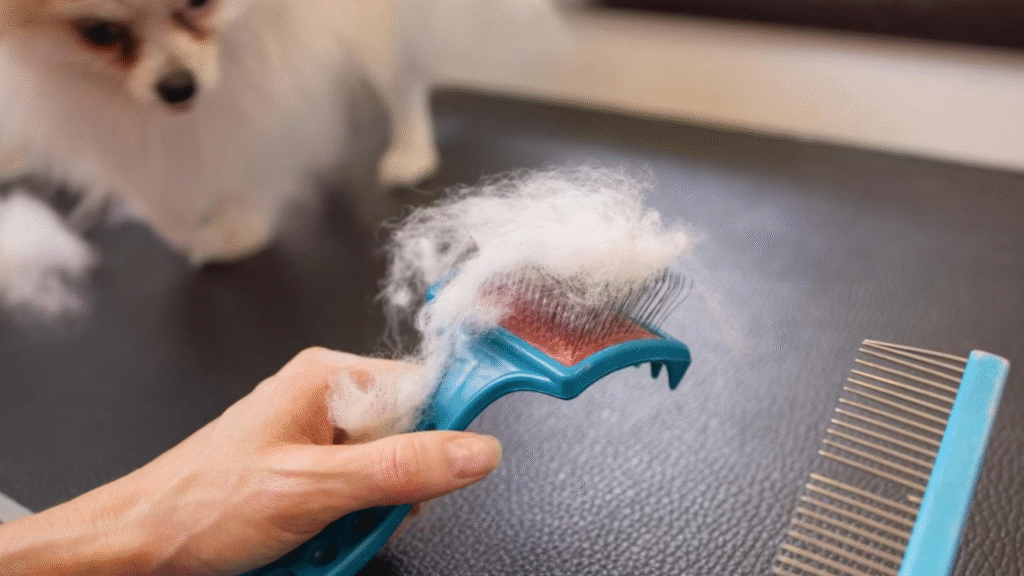

Common Causes of Hair Loss in Dogs
When a dog lose hair, there isn’t just one reason. Sometimes it’s small things, like fleas. Other times, it’s a health problem that needs a vet. Here are the main causes.
Allergies and Skin Irritations
Allergies are one of the biggest reasons for dogs hair falling out. Some dogs can’t handle certain foods, while others react to dust, pollen, or flea bites. The skin gets itchy, and the dog scratches or licks until the fur breaks off. Cleaning products or shampoos with harsh chemicals can also trigger the same reaction.
Infections and Parasites
Skin infections show up as bald spots, scabs, or even a bad smell. Ringworm, a fungal infection, leaves round patches where fur disappears. Mange mites dig into the skin and cause crusty bald areas. Fleas and ticks may not burrow, but they make a dog scratch nonstop, which pulls out hair over time.
Hormonal and Internal Issues
Some health problems inside the body lead to dog disease hair loss. Low thyroid levels can make fur thin and dull. Cushing’s disease often causes dog lose hair from the sides and back. Female dogs may also lose patches of fur after giving birth or being spayed. Unlike skin allergies, these problems don’t always cause itching, the coat just looks thinner and doesn’t grow back quickly.
Stress and Behavior
Not all hair loss comes from illness. Stress can cause balding dogs too. A nervous or bored dog may lick the same spot over and over until the fur is gone. Dogs left alone too often sometimes develop this habit as a way to cope with anxiety.
Other Causes
Age plays a role. Senior dogs often have coats that look thinner. Poor diets that don’t have enough protein or healthy fats also cause dry, weak hair. Even owners can make mistakes — over-bathing or using strong shampoos can strip oils from the skin, leading to shedding and bald patches.
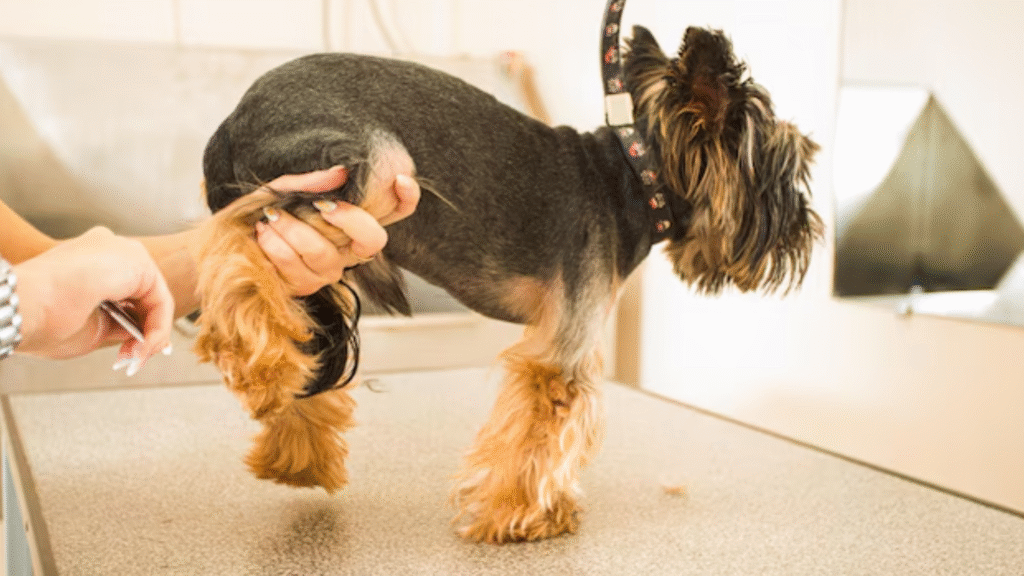

Diagnosing Fur Loss in Dogs
When a dog lose hair, guessing at home is risky. A vet checkup is the only way to know if it’s a minor issue or a bigger health problem. Different tests are used to find the cause.
- Skin scrapings: A scraping lets the vet check under a microscope for mites, ringworm, or other skin infections that are not visible to the eye.
- Blood tests: These help spot problems inside the body, like thyroid disease or hormone imbalances, that often cause dull coats or patchy dog lose hair.
- Allergy testing: Done if the vet suspects food or environmental triggers. It can show if pollen, dust, or certain ingredients in food are causing irritation.
- Medical history: Age, breed, and past health problems give clues. For example, some breeds are more likely to have dog disease hair loss than others.
Sometimes, a vet will try the simplest treatment first, like flea medication, before doing all the tests. If the hair grows back, the problem was likely parasites. If it doesn’t, further checks are done until the true reason is found.
Balding Dogs: When to Worry
All dogs shed, but balding dogs are a different story. Normal shedding makes hair thinner across the body. What’s not normal is when fur falls out in patches or comes with other problems.
You should take a closer look if you see bald spots with scabs, sores, or flaky skin. A bad odor from the skin is another red flag. Sudden dog lose hair that spreads quickly often means infection, parasites, or an underlying disease.
Pay attention to changes in your dog’s overall health too. If fur loss in dogs comes with weight gain, tiredness, or increased thirst, it may point to hormonal issues like thyroid disease or Cushing’s.
Seasonal shedding usually looks even and doesn’t cause pain. Patchy, itchy, or smelly dog lose hair is different — and that’s when your dog needs a vet.
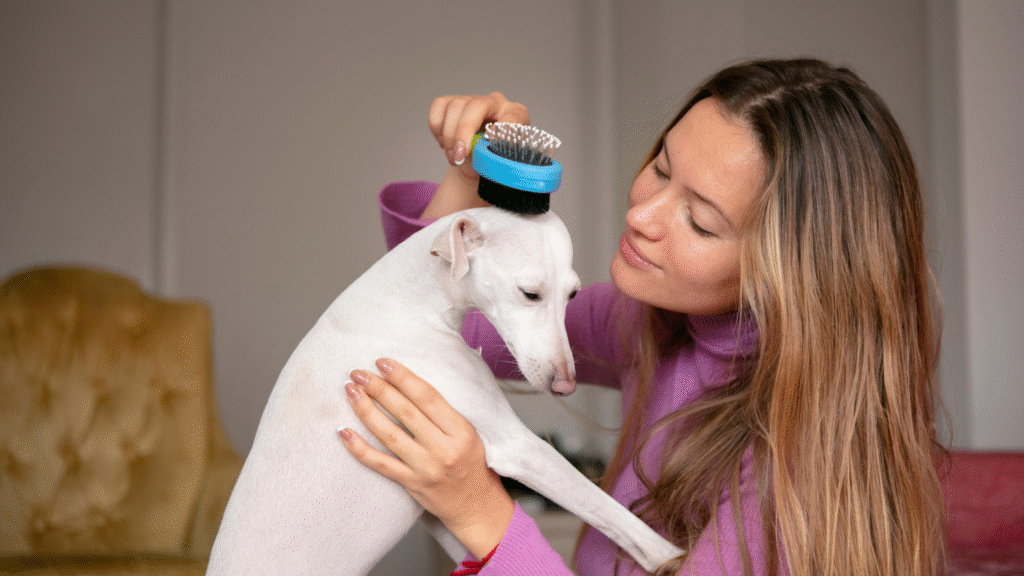

Treatment Options for Hair Loss in Dogs
When a dog lose hair, there’s no single fix. What works for one case won’t always work for another. A vet looks at the cause first, then suggests treatment. Owners can help too.
Veterinary Treatments
- Infections: If bald spots come with scabs, smell, or pus, vets usually reach for antibiotics or antifungal medicine. That might be pills, creams, or both.
- Skin problems: Dogs with flaky or itchy skin often get special shampoos. These shampoos are stronger than store brands and can calm the skin while killing germs.
- Hormone issues: Conditions like thyroid disease or Cushing’s need daily medication. Once the hormone balance is back, fur often starts growing again.
- Allergies: Dogs with nonstop itching sometimes get antihistamines or even allergy shots. This helps when food or pollen is the root problem.
At-Home Care
- Food upgrades: A diet that’s rich in protein and healthy fats makes coats stronger. Switching from cheap kibble to quality food often helps.
- Supplements: Fish oil or omega-3 chews can make a dull coat shiny and stop dry skin.
- Parasite control: Flea and tick treatments stop scratching before it starts. Missing even a month can trigger fur loss again.
- Gentle grooming: Harsh shampoos strip natural oils. Stick with mild, dog-safe washes and don’t over-bathe.
Natural Remedies (with care)
Some owners try home fixes. They’re fine for comfort but won’t cure the problem.
- An oatmeal bath can calm red, itchy skin.
- A thin layer of coconut oil may help small dry patches.
But, and this is important, if fur keeps falling out, you need the vet. These remedies are only a side support.
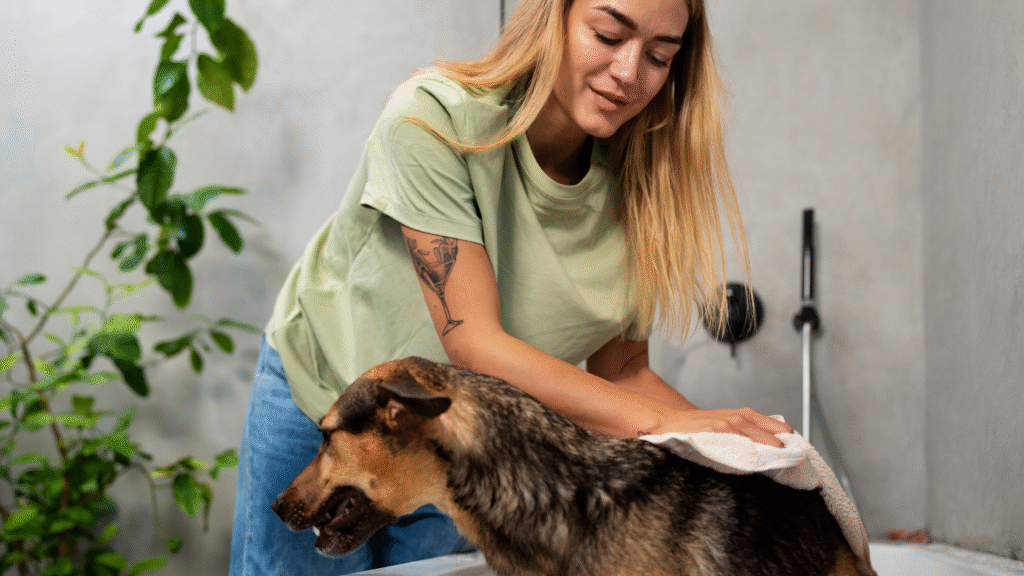

Preventing Fur Loss in Dogs
Stopping coat problems is a lot easier than fixing them later. If you don’t want to see your dog lose hair, focus on daily care.
- Food matters more than people think. Cheap kibble often leads to dull coats. Go for meals with real meat and some healthy fat; salmon, chicken, or lamb-based foods usually do better.
- A quick brush a few times a week helps more than just shedding. It lets you notice fleas, rashes, or sore spots before they spread.
- Flea and tick control isn’t optional. Even one flea bite can start itching, scratching, and bald patches. Missing a dose can undo months of progress.
- Shampoos can be tricky. Human shampoos strip oils, and even some dog ones are too strong. Stick to gentle, dog-safe washes and don’t overdo the baths.
- Stress plays a role, too. Dogs left alone all day may lick their fur raw. Walks, chew toys, and playtime keep both their mind and coats healthier.
- Don’t skip the vet. A quick yearly check often catches thyroid issues or skin problems early, long before you notice big patches of fur missing.
Conclusion
Finding chunks of fur on the floor or a bald patch on your dog’s side can make your stomach drop. You start thinking the worst.
But not every case of dog lose hair is a big disease. Sometimes it’s fleas. Sometimes it’s food. I’ve even seen dogs lose patches just from chewing the same itchy spot every night. The good news? Most of it can be fixed.
What matters is paying attention. If the skin smells, looks red, or your dog can’t stop scratching, don’t wait it out. That’s the time to get a vet involved. Thyroid issues, mange, infections — they won’t clear up on their own.
The truth is, most fur loss in dogs turns around once the cause is found. A few months later, the hair grows back, the itching stops, and your dog looks like themselves again. Don’t ignore it, but don’t panic either. Catch it early and help them get comfortable again.
Frequently Asked Questions
My dog is itching and losing hair, but no fleas — what does it mean?
If fleas aren’t there, think allergies. Food, pollen, even laundry soap can set a dog off. Check for red bumps or sore spots. If you see those, don’t wait it out, call the vet.
Dog hair loss home remedies do they work?
A few can help. Oatmeal rinse is good for itchy skin. A spoon of fish oil in food helps coats. But if bald patches keep getting bigger, home tricks won’t fix it.
Dog losing hair in patches and scabs — why?
That usually means something more serious, like mange or ringworm. Sometimes it’s a skin infection that smells bad. None of those go away by themselves. They need medicine from the vet.
Old dog lose hair — normal or not?
Older dogs shed more and coats thin out, yes. But heavy bald spots in seniors often point to thyroid issues. Bloodwork during yearly exams is the only way to be sure.
How to stop hair fall of dog?
Start with the basics: flea prevention, a decent diet, and regular brushing. If the fur is still dropping fast, don’t keep trying new shampoos, get the vet involved.


